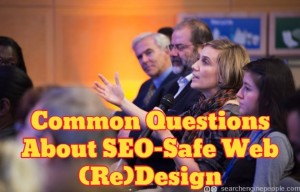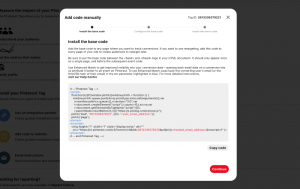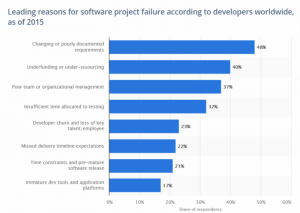— July 11, 2017

OpenClipart-Vectors / Pixabay
Elon Musk acts like space is the next frontier, but business pioneers know true innovation is happening on terra firma. Instead of exploring the cosmos, business leaders are experimenting with office dynamics. The 21st-century workplace is characterized by perpetual changes and increasingly unconventional setups.
Our ancestors would have trouble recognizing our employee-centered office spaces and working arrangements. Telecommuting has become commonplace for many small and large organizations, and most companies have a global focus — internationally-based employees, vendors, and clients are par for the course. Thankfully, communication is instantaneous with technology such as email, real-time messaging, virtual meetings, and synchronous conference calls.
How accustomed are we to this brave new work world? When children photo-bombed their father’s international interview on the BBC, society laughed it off because of how commonplace that scenario has become. Workers adore this ever-changing environment, but it can be problematic for business leaders.
CEOs, executives, and founders must corral a flock that often isn’t in the same office, city, or country. Although research shows innovative work environments are more productive, companies still have to grapple with the logistics of never-ending change.
Suddenly, heading to Mars seems a lot simpler than navigating the evolving business world.
Shades of Gray Among the Standing Desks
“Exception is the norm” might as well be the motto for the modern work environment. Employee handbooks and departmental budgets are peppered with gray areas instead of yesteryear’s black-and-white situations. Corporate leaders must make decisions on a case-by-case basis, usually with no prior expertise in handling such situations.
When I began telecommuting, there was no established rule book. I worked with my supervisor and our human resources department to create the boundaries of my flexible work arrangement. We established performance metrics and expectations to ensure everyone had the same understanding of the arrangement. For instance, I would be available via instant-messaging platforms during standard working hours, respond to emails within 24 hours, and visit the office at least once a month.
As my telecommuting progressed, my colleagues and I established more mutual trust. This allowed us to eliminate a few of those initial ground rules — I no longer had to provide a weekly account of what I had done and planned to do, for example. We managed to make telecommuting work, but it truly was a team effort.
That collaborative spirit is missing from many employee-driven work cultures. We’ve admitted that certain employees work best when they can choose for themselves how and when they do their best work, but we neglect to create the necessary structure. Without a framework approved by leadership and workers, mass chaos is inevitable. Empowerment is fine, but responsibility goes both ways. Leaders should be ready to provide feedback on a new set of behaviors, and employees must be open to the give-and-take of the modern work environment.
Caring for the Heart of Your Organization
Is your company ready to give more freedom to employees? Do you feel like you’re losing great people to more agile competitors? It’s probably time to become an employee-centered workplace. Here are a few guiding principles as you make the transition.
1. Acknowledge your beliefs and assumptions.
Spend time reflecting on your own beliefs about work. Do you think tasks only get done at a desk (or in a cubicle), or do you feel like it depends on each worker’s role and responsibilities? What problems and benefits does your current structure offer? Get everything out in the open before you move forward. After you’ve addressed your biases, map out your ideal workplace. Whether it involves a shift to more telecommuting or an open floor plan, visualize it with the help of department leaders and frontline employees. This exercise can help you uncover potential issues and opportunities. Compare your dream hierarchy with your current structure. If there isn’t natural overlap, consider how you can steer your company in the desired direction.
2. Scan your environment and ask questions.
Talk with the people who will be most affected by proposed changes: your employees. What would work best for them? How can they bring their best selves to every aspect of their work lives? Listen and learn before you hit the budgets. Consider ways you can spend your money more effectively. Instead of building out cubicles and conference rooms, for example, your team might be happier with tables and chairs, a booth for private calls, a smattering of standing desks, and the ability to work from home (with advance notification and approval, of course).
3. Develop leaders for emerging challenges.
Leaders received education on everything from workplace conflict to motivating employees, but there is no such thing as too much communication-related training. Managers must be able to provide consistent, constructive feedback to the employees they supervise. Your goal should be clear lines of communication — particularly if some workers are not in the office on a daily basis. It’s exceedingly easy to accidentally alienate remote team members. Send messages regularly to ensure they know exactly what’s happening and feel like a valued part of the organization. Moreover, don’t forget that remote employees could be tomorrow’s leaders; give them a chance to enjoy development opportunities that focus on building their analytical, communication, problem-solving, and collaborative abilities.
Piloting a business (or a spaceship) with no real boundaries might seem scary, but it’s also an exhilarating opportunity. Provided you’re on the same page, you and your team members can go anywhere in the universe. If you’re able to successfully adapt to this limitless workplace freedom, there’s nothing to stop you from boldly going where no one has gone before.
Business & Finance Articles on Business 2 Community
(58)









